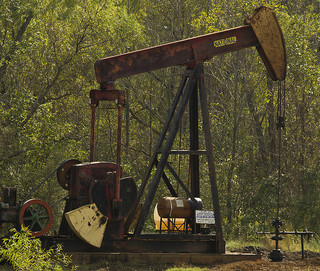Have Your Land and Drill it Too
By: Amos S. Eno
Posted on:07/25/2012 Updated:08/23/2012The Texas Agricultural Land Trust works with landowners to help plan for long-term conservation along with development of oil and mineral rights
In Texas, we have made oil and gas and conservation and wildlife and agriculture work together for many, many years. As an agricultural land trust, part of what we try to do is help figure out how to make conservation easements and oil, gas or mineral development work,” says Blair Fitzsimons, Executive Director of the Texas Agricultural Land Trust.
TALT was founded in 2005 and currently has about 128,000 acres under permanent conservation easements, which is their specialty. In September 2011, they held an Oil & Gas Webinar addressing the “triage process” a landowner has to go through to determine if they can do an easement and have mineral development.
A Decision Tree Process for Landowners 
In working with landowners, they start from the premise that IRS regulations say owners can have oil and gas development on their property as long as no long-term permanent damage to the surface occurs. This is more tricky than it sounds in the Lonestar state.
Texas law allows surface and subsurface mineral rights ownership to be severed. It’s possible for someone to own surface rights plus all mineral rights, surface rights with no mineral rights or surface rights with partial mineral rights. Furthermore, the state of Texas says that mineral rights trump surface rights. This means that for the case in which a surface owner does not own his or her mineral rights, and they are leased out, a conservation easement is probably a non-starter.
Thus, TALT’s process in working with landowners who want both both conservation and oil, gas or mineral development is essentially a decision tree. In the Oil & Gas webinar, TALT leads the landowner through these various scenarios - with an eye to facilitating the best decision for the landowner and the property.
We Can’t Make Conservation Expensive - It’s Not Realistic
“Our point is to find ways to make the two work together,” says Fitzsimons. “If we’re going to foster conservation, we can’t ask landowners to give up things like their mineral rights - it’s not realistic. We can’t make conservation expensive. We have to keep finding ways to fund conservation - ways that, if we’re creative, can foster conservation while preserving income streams for the landowner.”
Another critical element in deciding whether to pursue a conservation easement is the lack of detailed guidance or criteria from the IRS defining for landowners “no long-term damage to the surface.” For these reasons, to quality for an easement, TALT generally advises that a landowner have a good degree of influence, if not outright ownership, to control the way mining development occurs on their property.
The Key to Oil & Gas Conservation Easements
TALT currently holds a couple of easements with active drilling. The key to these easements, Fitzsimon contends, is making sure the landowner has a good surface use agreement with the oil or mineral company that dictates how the company will reclaim the surface and which will protect the conservation values of the easement. TALT asks landowners to consider issues such as road construction, in which layout - or even innovative techniques such as the use of pallets in place of gravel - can minimize long-term erosion. Another recommendation is to keep drilling pads associated with mining equipment out of the riparian zone.
They highlight cutting edge research by organizations like Cesar Kleberg Wildlife Research Institute, such as
-
innovative use of terracing,
-
hay bailing with native plants to ensure reseeding with natives,
-
careful attention to the removal and replacement of topsoil in the right order.
The time required for reclamation to occur in Texas varies dramatically, depending upon soil type, rainfall and how aggressively landowners use cattle or mechanical means to speed reclamation. “Of course, we’ve been suffering from a horrible drought here over the past year,” explains Fitzsimons. “But I’ve seen some reclaimed areas come back beautifully in one year with the right amount of rainfall.”
 Sign In
Sign In
 Sign In
Sign In
